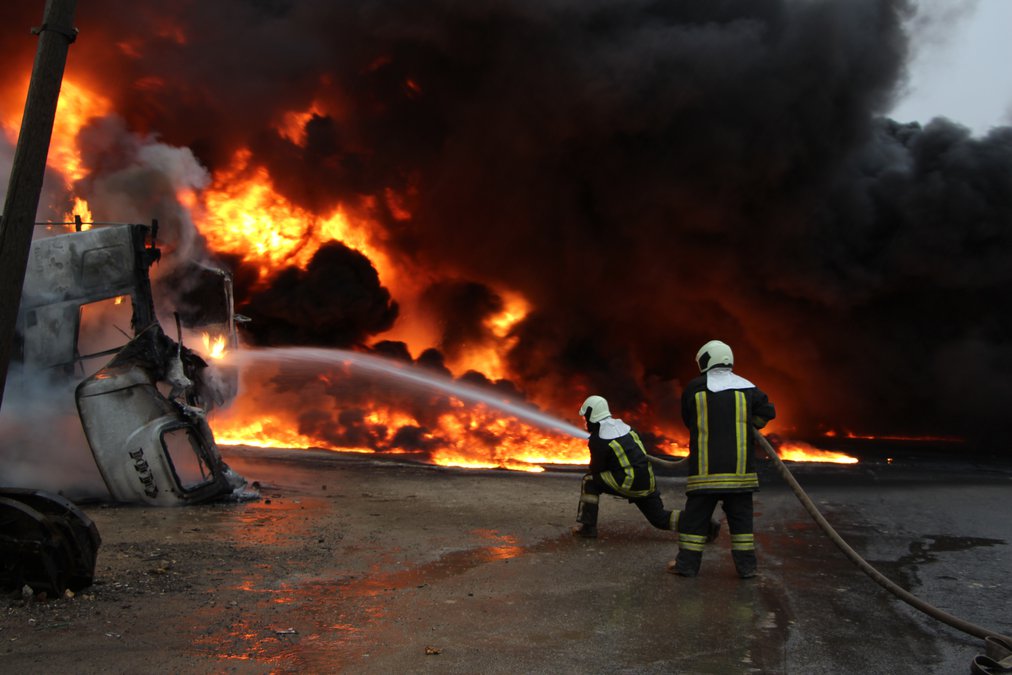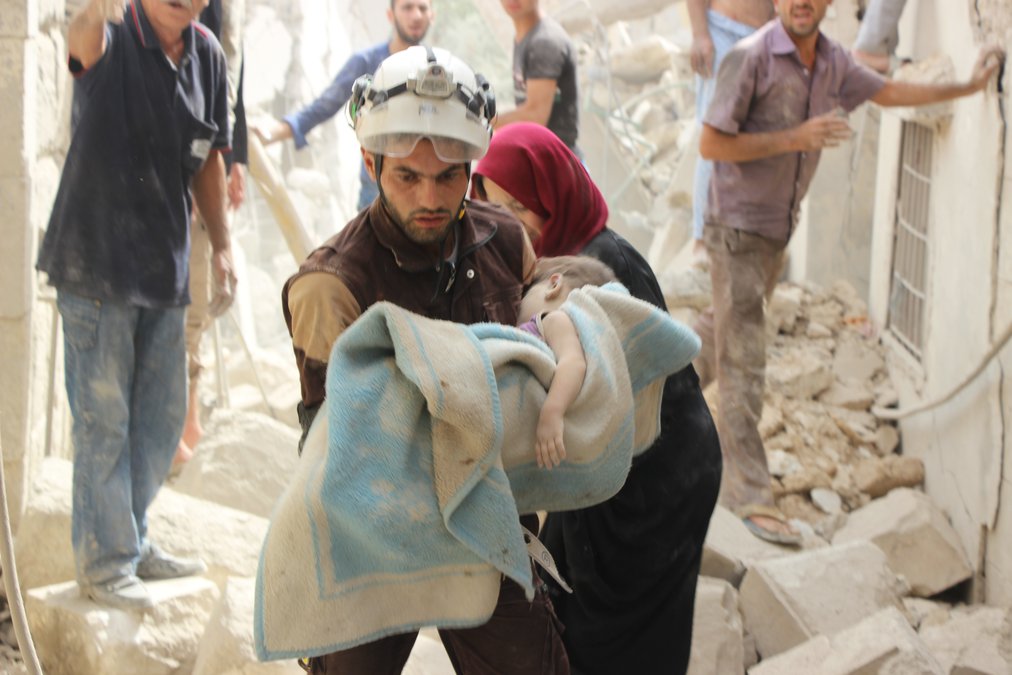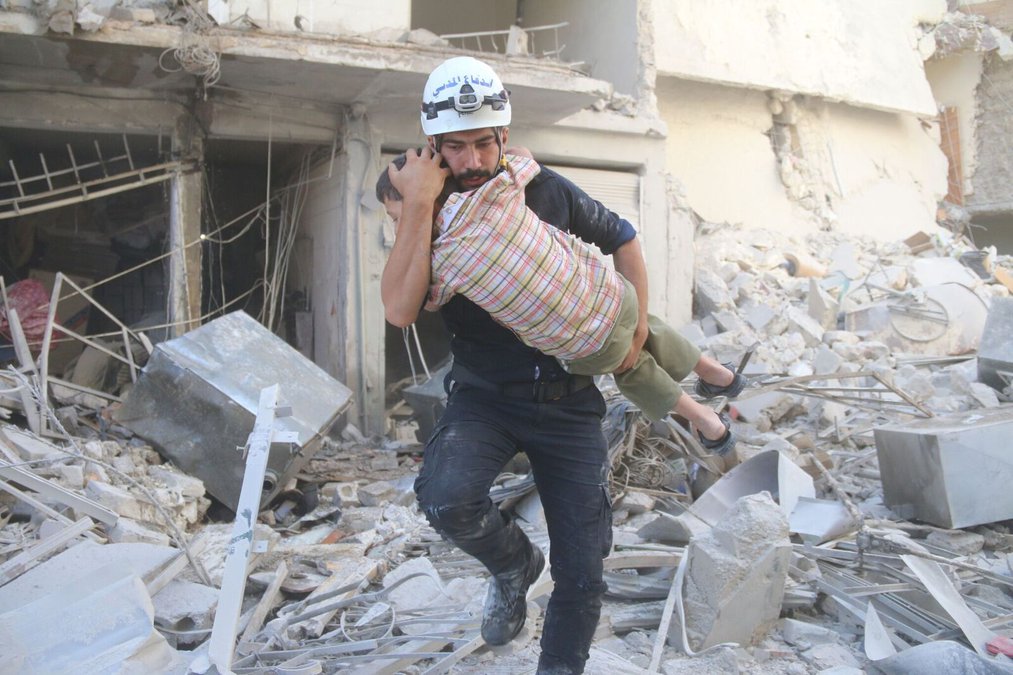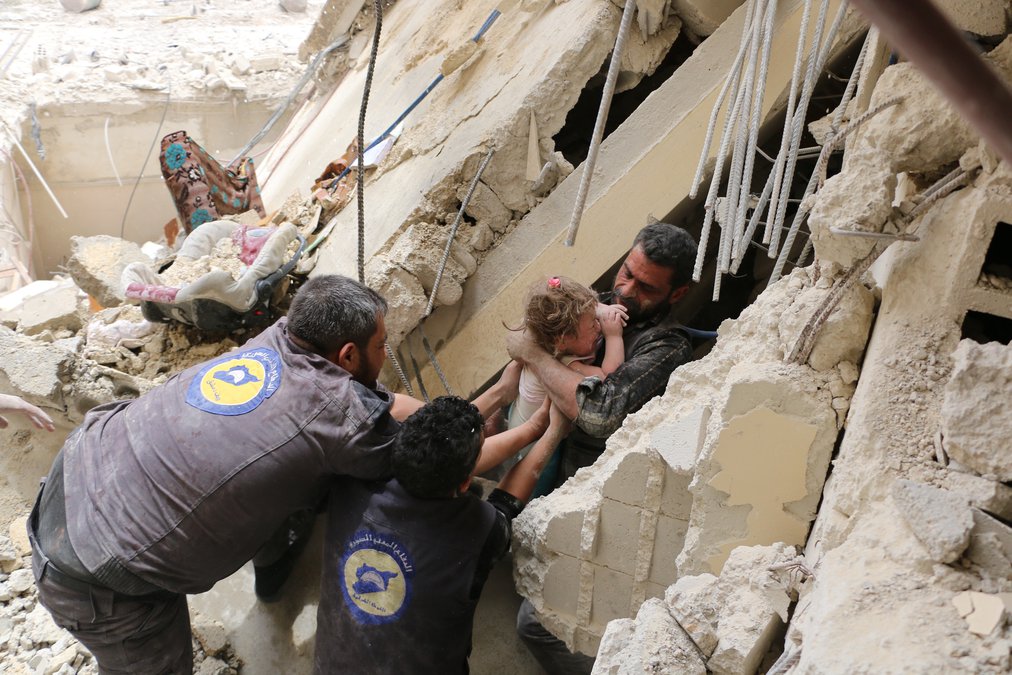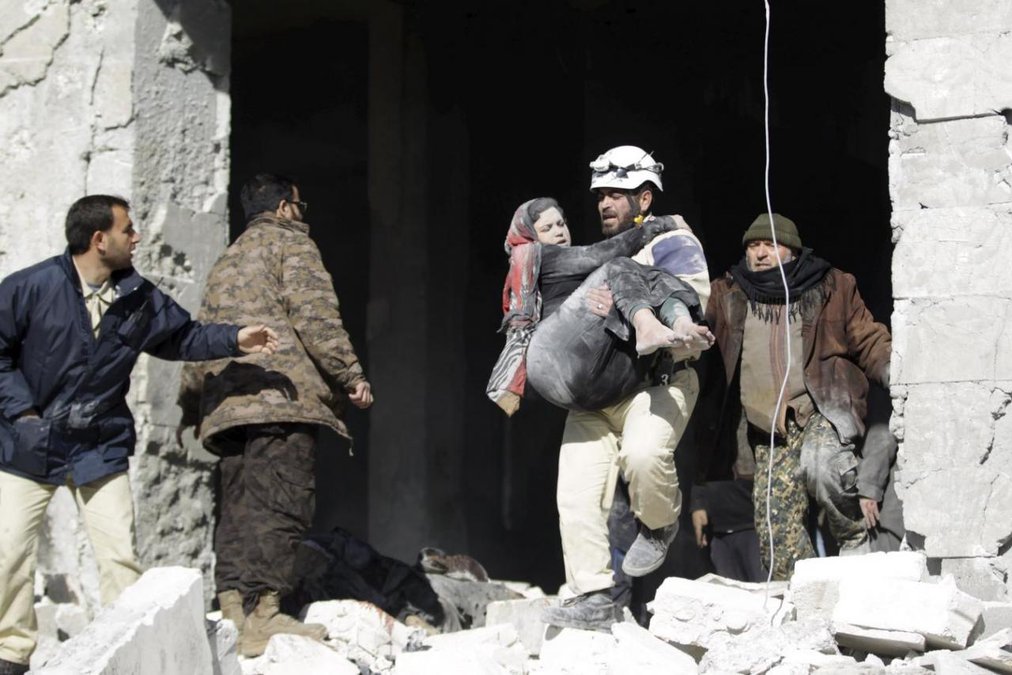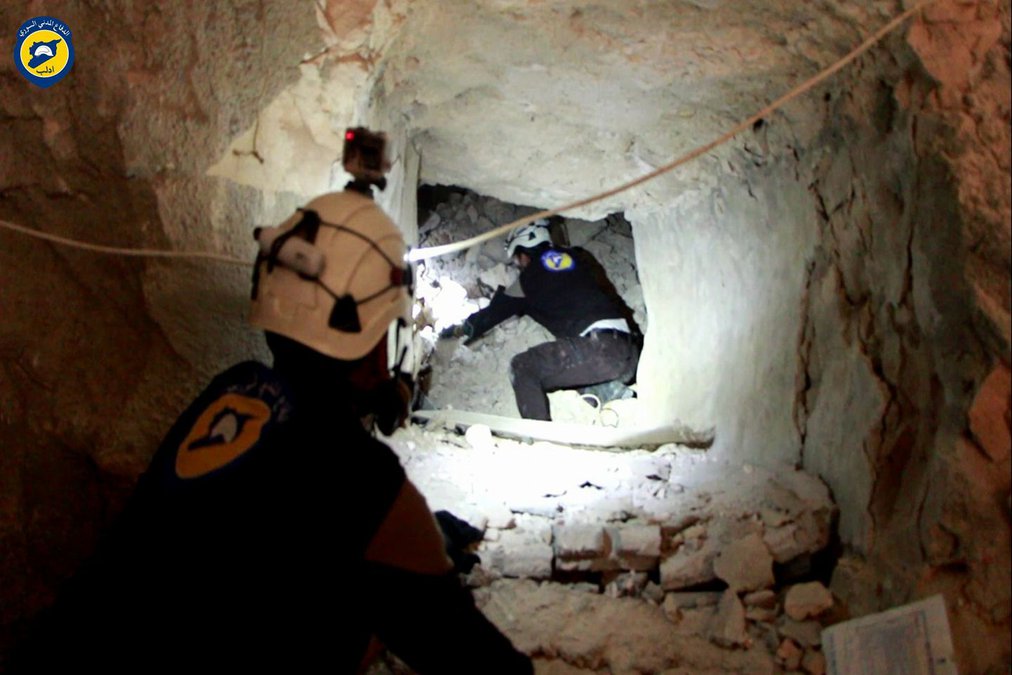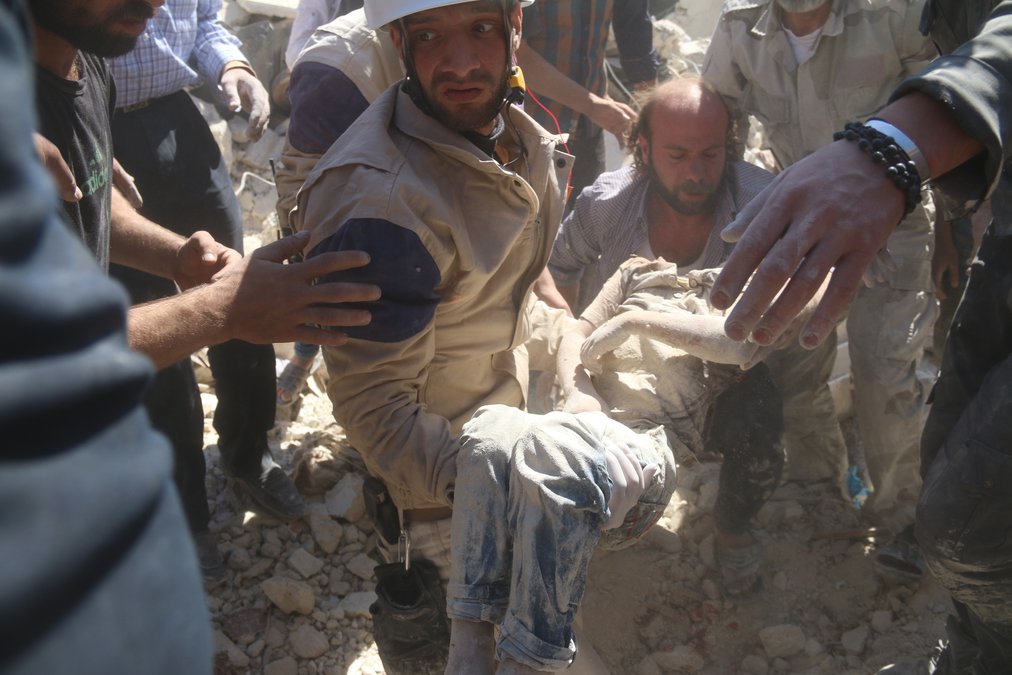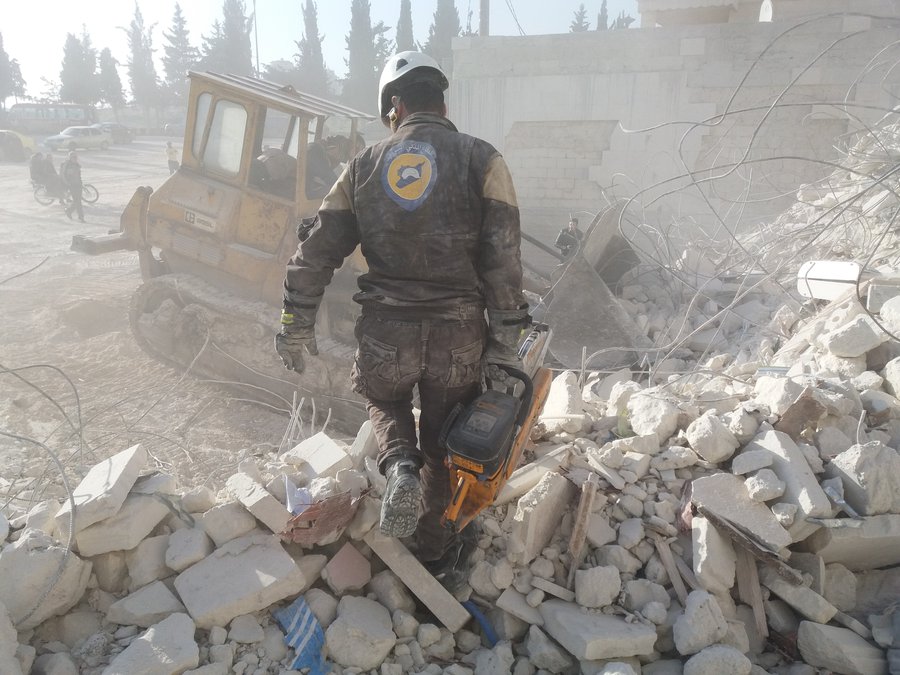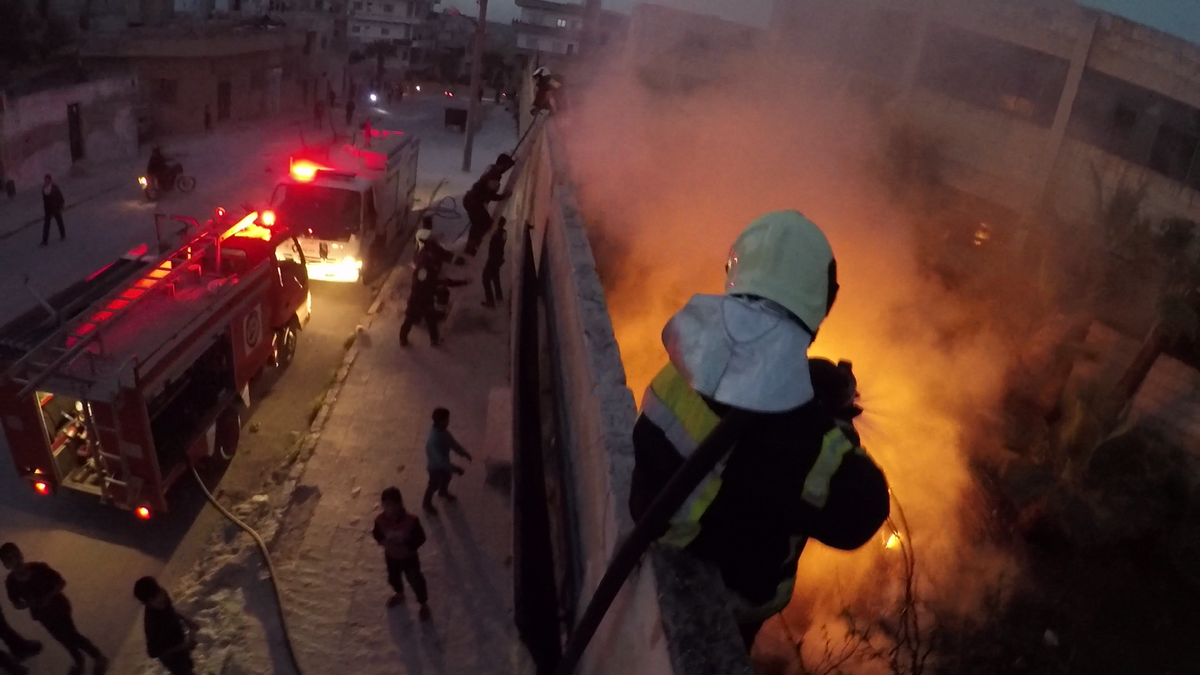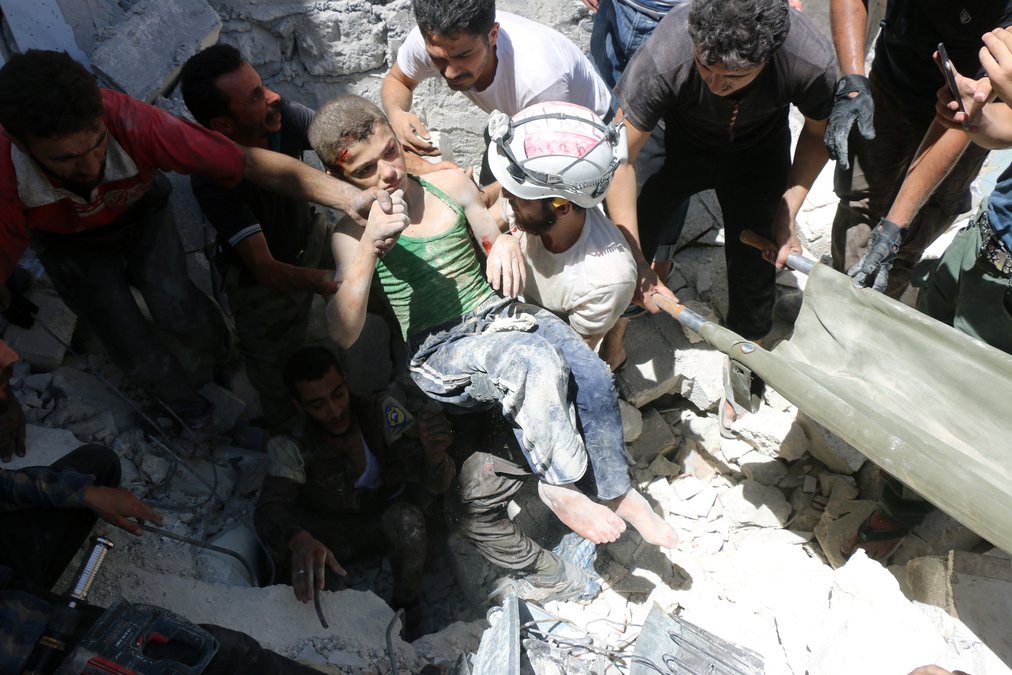Saving Lives
The goal of our search and rescue missions is to rescue the greatest number of people in the shortest time while minimising the risk to our volunteers. We have now saved more than 115,000 lives through our search and rescue work.
The Syrian regime started its campaign of aerial attacks on areas outside its control in late 2012, Russian airpower joined these attacks in September 2015. Airplanes and helicopters have dropped missiles, cluster munitions, chemical weapons, barrel bombs and naval mines on schools, hospitals and homes. While the regime claims these attacks are focused on fighting terrorism, the data shows they systematically target civilians and the infrastructure that serves them.
The force of aerial attacks in Syria has been compared to the impact of an earthquak hitting an area, sometimes multiple times a day. The damage these attacks cause in densely populated areas is particularly acute, as people live and work in concrete single and multi story dwellings that collapse when struck, leaving their residents buried.
When these attacks happen our volunteers rush to the scene to rescue civilians. The hours following an attack are the most critical for saving lives, though the work of removing corpses can continue for days and we do not stop until we find everyone.

Eastern Ghouta
Rescue response, Feb 2018
You forget your exhaustion, your injuries, your pain when you rescue a person alive. No-one can describe the feeling.
Bebars Mishal, Head of Centre
When our volunteers started responding to the scenes of attacks in 2012 they had limited experience and equipment, often digging their neighbours with only their bare hands. In 2013 we received professional training on the techniques of urban search and rescue in Turkey.
The first trainings (Urban Search and Rescue Level 1, USAR Light) developed our capacity in simple search and rescue methods like searching under rubble using sound, signs, and gestures. It taught us how to support fragile roofs through cutting rebar, drills and motor powered manual diggers. We learnt how to safely remove civilians from the scene and basic firefighting using powder and foam fire extinguishers.
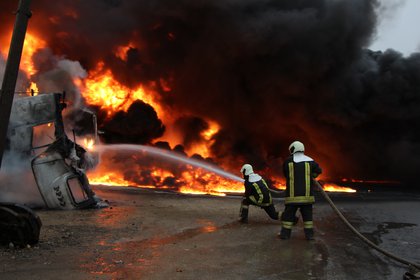
Aleppo province
- White Helmets firefighters extinguish fire in a fuel truck - Idlib 2018
In 2014 we started on advanced training (Urban Search and Rescue Level 2, USAR Medium) that allowed us to improve our professional capabilities to save more lives. We learnt how to identify casualties using cameras, developed expertise in using heavy tools to remove rubble and how to lift roofs using airbags which proved helpful to allow us to access casualties. Finally, the course provided more specialised medical training for first responders.
In 2016 we created a dedicated ‘Training Department’ inside Syria to increase the efficiency of the volunteers, improve performance and enhance safety levels through developing appropriate procedures. With the establishment of the department four training centres were opened. Unfortunately, as part of the systematic targeting of our centres by the Syrian regime and Russia the Al-Attareb centre was completed destroyed. The centres in Homs, Damascus and Daraa closed when these areas were forcibly displaced and the trainers moved to the north of Syria.
Despite the challenges in 2018 we provided 27 courses in the basics of search and rescue for 350 volunteers meaning all of our nearly 3000 volunteers have received this training.
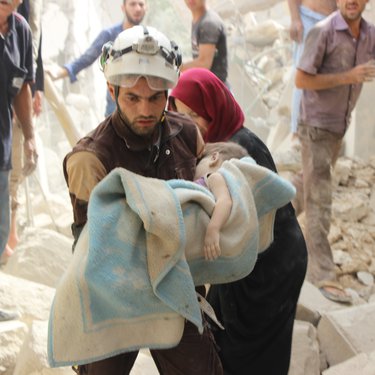

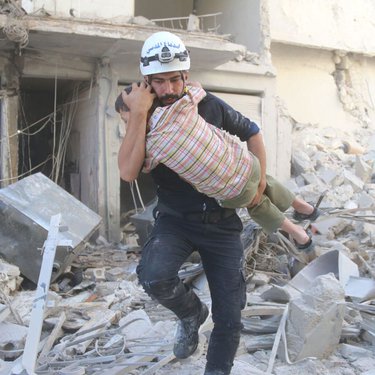
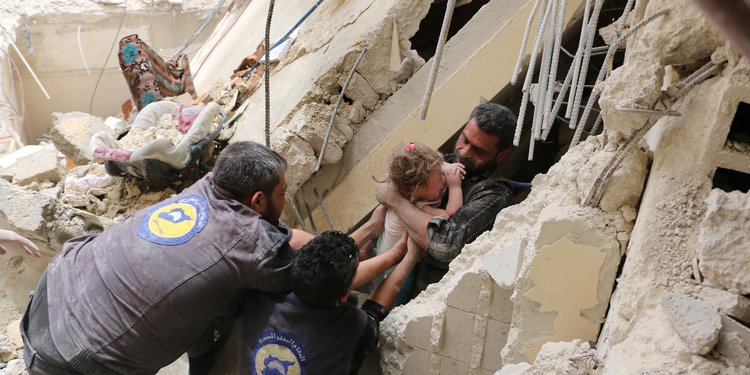
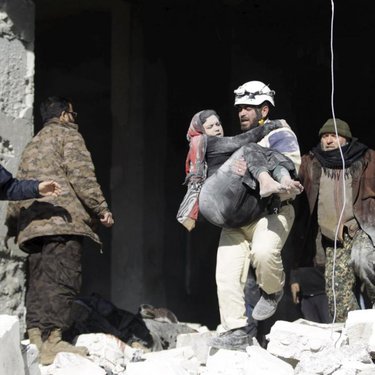
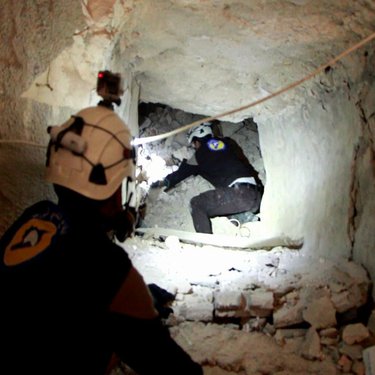
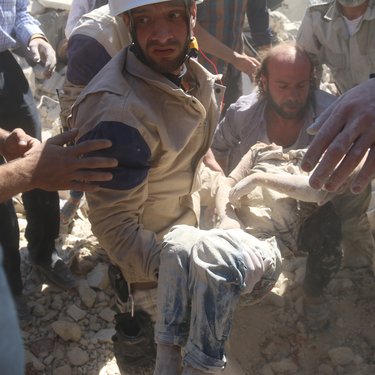
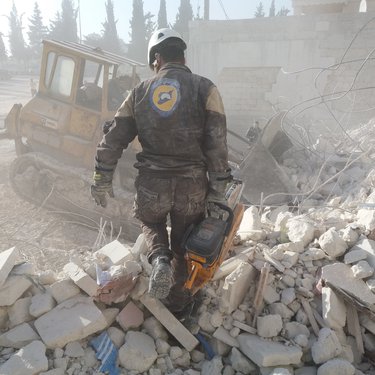
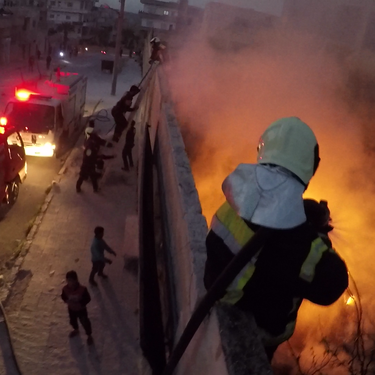


Idlib city
Pulling out a child's body from the rubble following an airstrike- Idlib city 2016
Aleppo city
A volunteer pulling a child out of his destroyed house- august 2014
eastern Ghouta
Search and Rescue team pulled out a girl from under rubble- Eastern Ghouta Feb- 2018
Aleppo city
A volunteer rushing a girl to ambulance after rescuing her following an airstrike- Idlib city 2016
Idlib province
Search and Rescue team trying pull out a girl from under rubble- idlib 2016
Aleppo city
A volunteer pulling out a child's body from under rubble after regime forces targeted residential areas in eastern Aleppo- September 2015
Idlib province
Volunteer carrying out a search operation following an airstrike on civilian houses in Idlib- August 2015
Aleppo province
Firefighters controlling fires caused by airstrike in Aleppo countryside- March 2016
Easteren Ghouta
A volunteer evacuating an injured child following an airstrike on Doma city in Rif Dimashq- July 2016
Aleppo city
Rescue team while rescuing a child from under rubble after several hours of continuous work after airstrikes on eastern Aleppo's neighborhoods - June 2016


